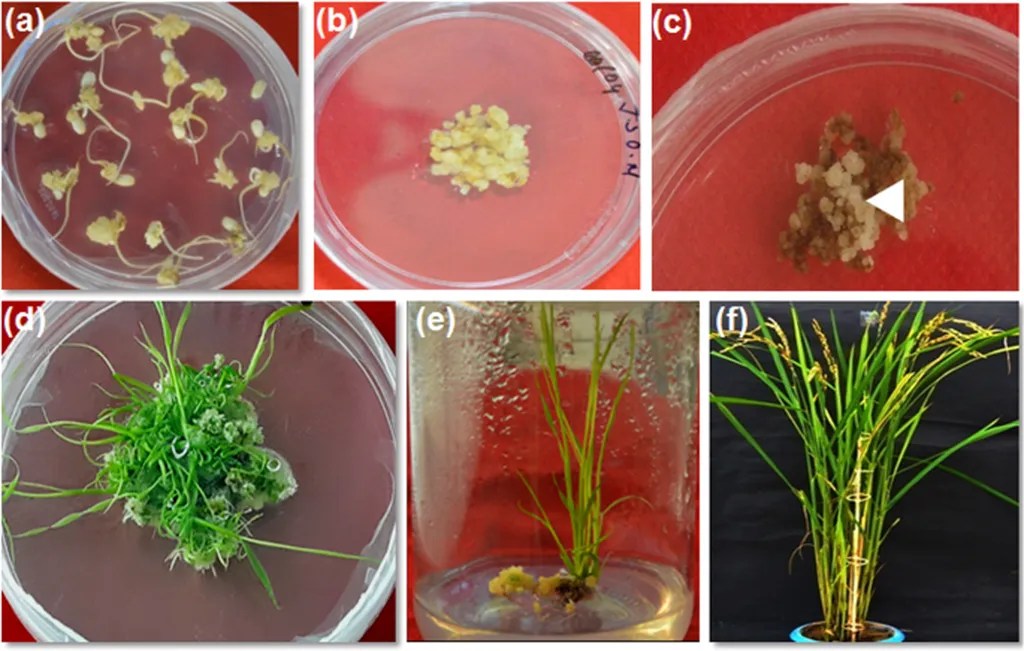In a significant stride towards combating rice blast disease, researchers have uncovered a novel approach that could revolutionize crop protection strategies. The study, led by Xiaoqian Sun from the College of Plant Protection at Yunnan Agricultural University, reveals that heterologous overexpression of the *Magnaporthe oryzae* effector *PWL2* in rice plants enhances their resistance to the devastating fungal pathogen.
Rice blast, caused by *Magnaporthe oryzae*, is one of the most destructive diseases affecting rice crops worldwide, leading to substantial yield losses and economic impacts. The study, published in the journal *Plants*, sheds light on the intricate mechanisms underlying rice immunity and offers promising avenues for developing resistant rice varieties.
The researchers found that transgenic rice lines overexpressing *PWL2* exhibited enhanced resistance to rice blast. Notably, the *PWL2*-GFP fusion protein was localized on the plasma membrane and cytoplasm, indicating its potential role in cellular defense mechanisms. “This finding is crucial as it provides insights into the subcellular dynamics of *PWL2* and its involvement in rice immunity,” Sun explained.
One of the key discoveries was the rhythmic expression pattern of the *NPR1* gene during the early stages of *M. oryzae* infection in the transgenic rice lines. However, during later stages of infection, the expression levels of *NPR1*, *WRKY45*, *PR1a*, and *PR10a* genes were reduced, along with decreased H2O2 accumulation. Despite these changes, salicylic acid (SA) levels remained unchanged, suggesting a complex regulatory mechanism at play.
Transcriptome analysis further revealed that SA treatment induced the expression of the *ARGONAUTE11 (AGO11)* gene in rice. Intriguingly, during the later infection stage in the transgenic rice lines, the expression levels of both *AGO11* and *PWL2* genes increased. The detection of *PWL2*-derived small interfering RNAs (siRNAs) in these transgenic rice lines points to a dual defense strategy involving both the SA signaling pathway and *PWL2*-derived siRNAs.
The implications of this research for the agriculture sector are profound. By understanding the molecular mechanisms underlying rice blast resistance, scientists can develop more effective and sustainable crop protection strategies. “This study opens up new possibilities for engineering rice varieties with enhanced resistance to *M. oryzae*, which could significantly reduce yield losses and improve food security,” Sun noted.
The findings also highlight the potential of leveraging fungal effectors to bolster plant immunity. This approach could pave the way for innovative biotechnological applications in agriculture, offering a more targeted and efficient means of combating plant diseases.
As the global population continues to grow, the demand for sustainable and resilient agricultural practices becomes increasingly urgent. This research represents a significant step forward in the quest to develop crops that are better equipped to withstand the challenges posed by pathogenic threats. By harnessing the power of molecular biology and genetic engineering, the agricultural sector can look forward to a future where food security is more attainable and sustainable.

